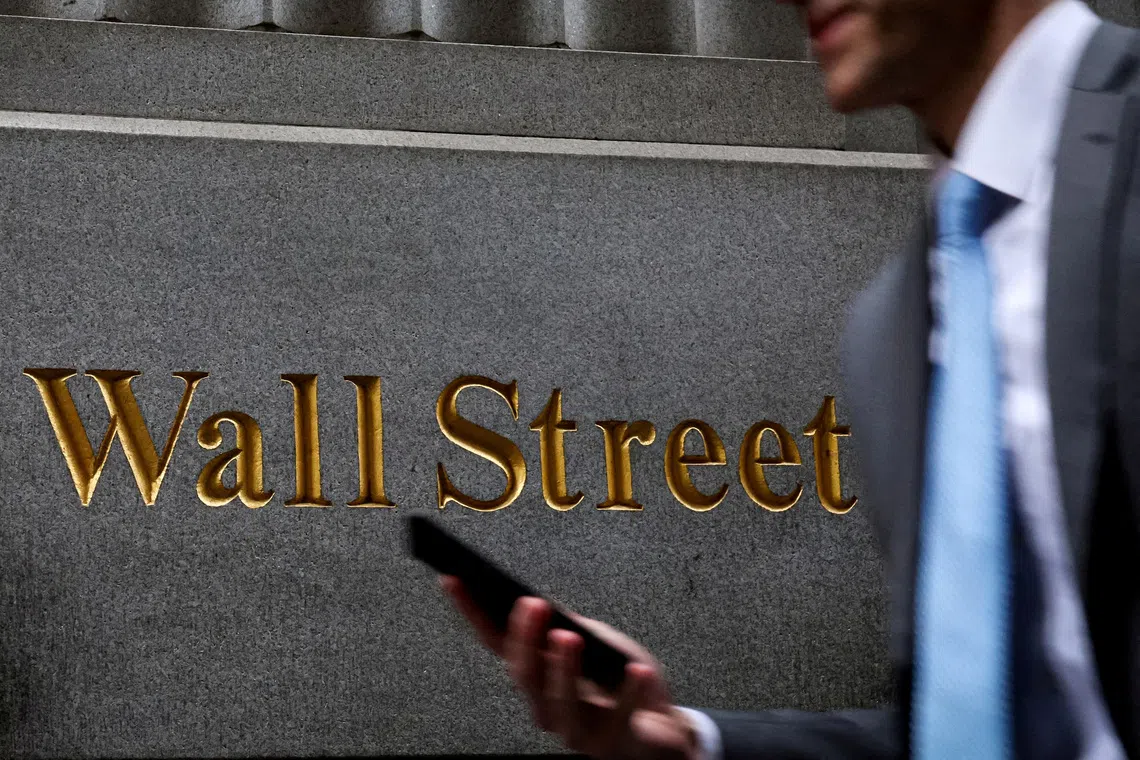US banks’ trio of alleged frauds spark fear of broader issues
Sign up now: Get ST's newsletters delivered to your inbox

Seventy-four of the biggest US banks shed more than US$100 billion (S$129 billion) in market value on Oct 16.
PHOTO: REUTERS
Follow topic:
NEW YORK – Relative to the collapse of First Brands Group and Tricolor Holdings, the hits disclosed by regional lenders Zions Bancorp and Western Alliance Bancorp seemed small – a figure in the tens of millions, not billions.
Still, the back-to-back reveal of loan fraud has renewed the simmering debate on Wall Street about whether the era of freewheeling capital is about to bring a comeuppance for banks and non-banks alike.
In the case of Zions and Western Alliance, the alleged culprits were the same: Investment funds tied to Mr Andrew Stupin and Mr Gerald Marcil, among other parties, borrowed the funds to finance their purchases of distressed commercial mortgage loans.
A lawsuit from Zions revealed that its wholly owned subsidiary, California Bank & Trust, provided US$60 million (S$77.6 million) to the borrowers, and that an investigation found many of the notes and underlying properties were transferred to other entities – allegations that the two men’s attorney said they “vehemently deny”.
The disclosures add to other recent loan blow-ups, including sub-prime auto lender Tricolor Holdings, which filed for bankruptcy in September amid allegations of fraud, followed by the collapse of auto parts supplier First Brands Group, which owed more than US$10 billion to some of the biggest names on Wall Street.
While Zions and Western Alliance reported relatively small losses from the alleged fraud, the reaction from stock investors was much more significant: 74 of the biggest US banks shed more than US$100 billion in market value on Oct 16.
“This is an industry where investors – especially those that are new to this sector – tend to ‘sell first and ask questions later’,” JPMorgan Chase analysts said in a note. They said they were nevertheless questioning “why all of these credit ‘one-offs’ are seemingly occurring in a short period of time”.
Mr Brandon Tran, the lawyer representing Mr Stupin and Mr Marcil, said the accusations against his clients were “unfounded” and misrepresented the facts.
Representatives for Western Alliance and Zions declined to comment.
Mr Jamie Dimon, JPMorgan’s chief executive, said on Oct 14, before the latest round of disclosures, that investors should be “forewarned” that more credit problems were likely to emerge
“When you see one cockroach, there are probably more,” Mr Dimon said after his bank released third-quarter earnings and outlined its US$170 million hit from Tricolor. “Everyone should be forewarned on this one.”
Big banks like his can fairly easily absorb charge-offs of that size, but the totals are more worrisome for regional lenders, some of whom were caught up in a crisis of their own less than three years ago.
Zions sank 13 per cent on Oct 16, the biggest plunge in six months, after it disclosed a US$50 million charge-off on the loan underwritten by its California Bank & Trust business. Western Alliance tumbled 11 per cent after it said it made loans to the same borrowers.
Still, industry executives believe that there was one sign the problem might be contained: the level of money lenders set aside in the third quarter to cover what they think their future bad-loan totals might look like.
While JPMorgan boosted its provision to US$3.4 billion, its five closest rivals were collectively setting aside the least in two years. One of them, Morgan Stanley, added nothing at all. BLOOMBERG

